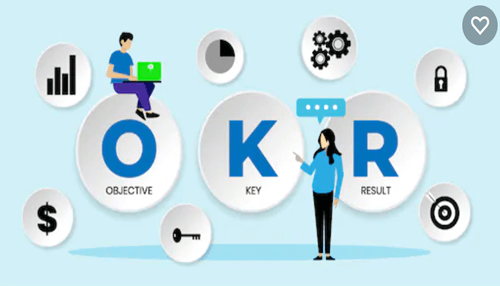Objectives and Key Results; a progress tracking approach, has been used and preferred by large businesses for many years now. As opposed to long-term, organizational goals that may not always align with the mission and vision of a company, OKRs help set short-term, ambitious yet achievable goals that are easily quantifiable as well.
Measured on a scale of 1-10, 1-100 or in percentage, the targets achieved can be easily measured and success of the business can be studied. If any changes need to be made to the existing policies or methods of work, they can be put into place and precious time and human resources of the company can be avoided.
What is the OKR structure based on?
Every business has a vision and a mission. Objectives must generally be in tandem with the vision of the business, as this is the ultimate goal of any organization. While setting the Objectives, it is to be kept in mind that they should apply to the entire company and every employee in it. Here are more OKR great examples.
Expected Key Results
Key results are the next stage of the key Objectives. These should include the results that your actions can generate and not the actions themselves; which means that the key results are the change that you bring about, in customer behavior for instance, and not the steps you take for it.
By monitoring key results, the company can keep track of every member’s contribution in adding value to the business. Also, when every member can see their progress, the collaborative result will be fruitful and achieved quickly.
A 60% to 70% success rate is good in the OKR approach. If your company or department is consistently churning in 100% key results, it means that your key Objectives are not ambitious enough. Low success rate can also show that your goals are probably highly unachievable and that you need to rethink them.
How are OKRs linked to your business?
1. Increase employee engagement
OKRs improve employee engagement by giving each team member a responsibility towards fulfilling a shared vision for the company. As all employees are aware of the Objectives, there is increased sense of meaning, because each person’s work is, in the end, going to contribute to the final goal.
2. Enhance teamwork
As the OKR approach is an extremely transparent, dynamic and open process, anyone who is part of the business, can see what tasks are being carried out, when, how and whether the results of the same are positive. They are also able to see what the other person is doing and how well they are contributing in order to achieve the long-term goals. This inculcates a sense of healthy competition, loyalty and trust amongst team members. It is also helpful for employees to understand the role of departments and branches other than their own.
3. Ensure accountability
With such a transparent system, employees and managers can also keep a check on everyone’s output and performance. Employees will be more accountable for their actions.



